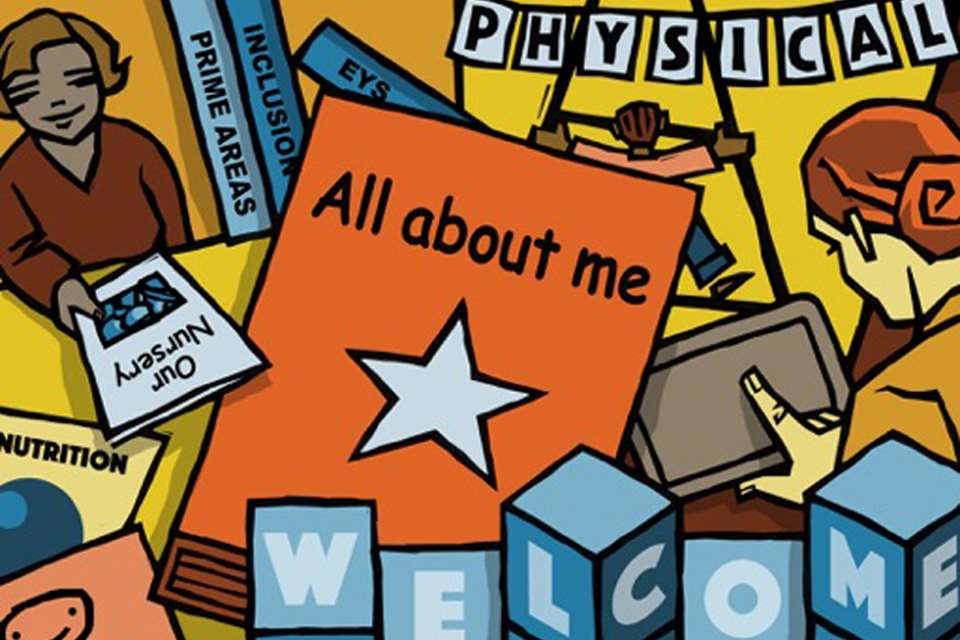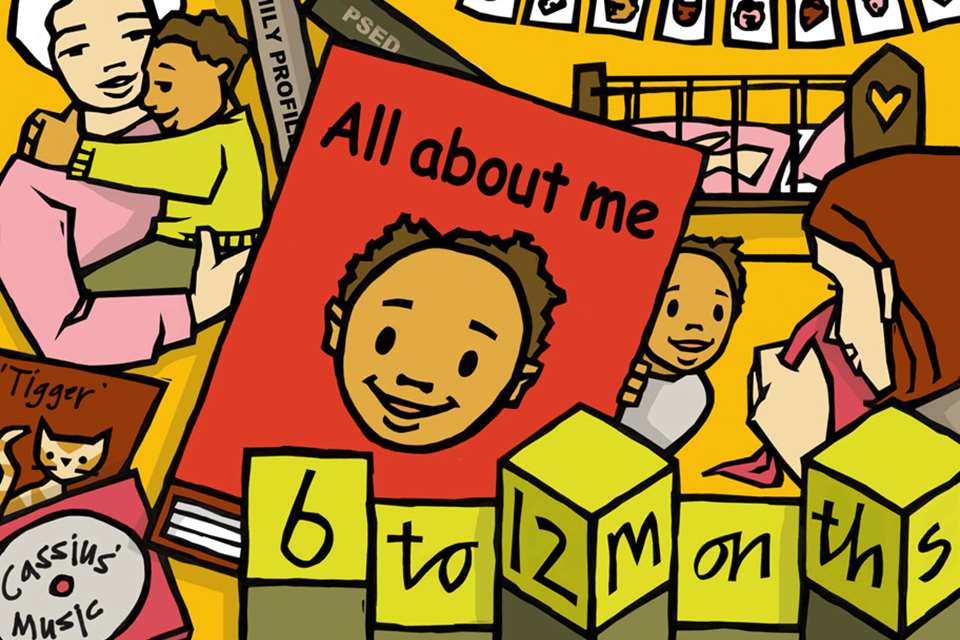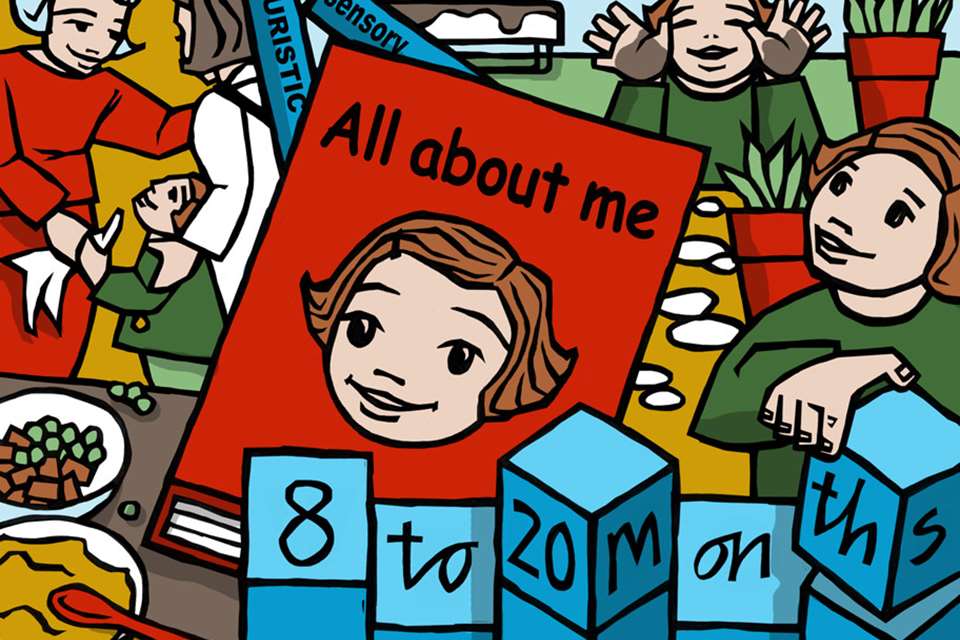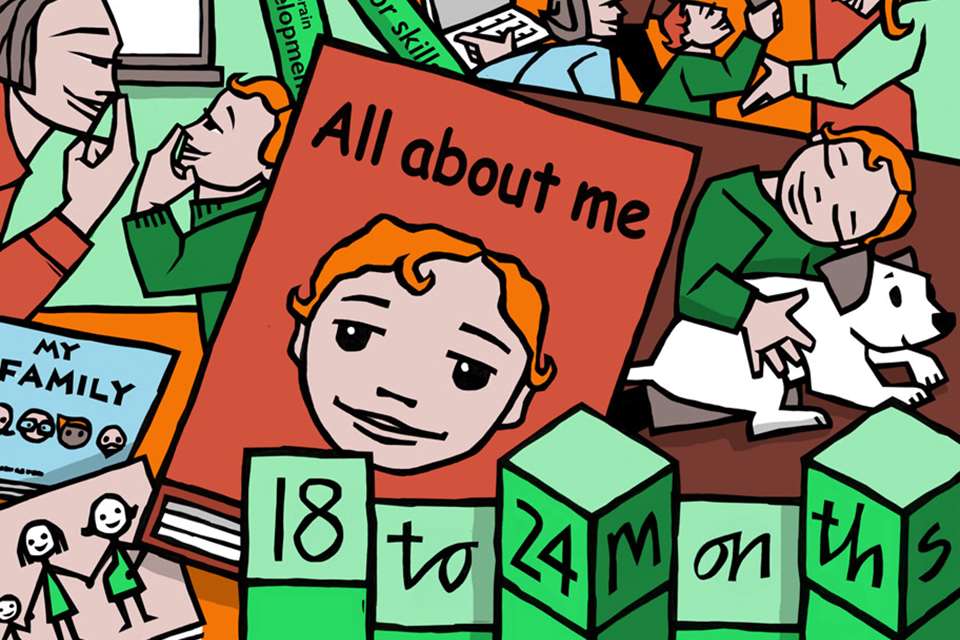STARTING POINTS: Part 5 - Jagati, 24 months
Julia Manning-Morton
Wednesday, May 4, 2016
Meeting the emotional and learning needs of the unique child

By Julia Manning-Morton, an independent consultant, trainer and author (www.key-times.co.uk/profiles/). She specialises in practice and provision that meets the needs of children under three and is an expert on the personal, social and emotional well-being of children and practitioners. Her publications include Two-Year-Olds In Early Years Settings: Journeys Of Discovery (2015) and Exploring Well-being in the Early Years (2014)
Two-year-old Jagati lives in a semi-detached house in Bristol with her mum Gita, dad Manish, older sister Neelam (four years) and new baby brother Sunil. Jagati started attending her local playgroup two months ago, not long after her baby brother was born.
Gita is not working while her children are young, so she was able to spend a long time staying with Jagati at the playgroup to settle her in, and now often spends time there helping out.
Jagati and her family are British Asian; her grandparents originated from The Punjab in India. They are all bilingual, speaking Punjabi and English at home and they practise the Hindu religion, although Gita says that this is mostly focused on the big festivals and family events.
PHYSICAL DEVELOPMENT: MOVING AND LEARNING
Like most two-year-olds, Jagati is a physically active learner. At their six-week settling-in review, Jas (Jagati’s key person) remarked to Gita how much Jagati seemed to love running and climbing outside. Gita laughed and said that Jagati was living up to her name, which means ‘bestowed with speed’; given to her because she was born so quickly and, Gita said, ‘had been doing everything quickly ever since’!
Jas had observed how Jagati likes to climb up and down the slide, repeating ‘up ‘n down’ to herself and that when they had been stuck indoors due to works happening in the garden, Jagati had then tried to use the chairs as ‘steps’ to climb on. This had been too risky in the limited indoor space so Jas had encouraged Jagati and her friend Tom to make ‘steps’ with the soft-play blocks in the soft-play room instead.
At first, Gita was worried that Jas might think Jagati was being ‘naughty’ by climbing indoors but Jas had explained how important physical activity is because it plays a significant part in making the connections between the neurons in the brain. The links between the brain and the body are vital; the brain gives the body instructions about how to move but the body tells the brain where we are in time and space, so tells the brain ‘this is me’; thereby supporting children’s developing sense of self as well as their physical skills.
20-30 months: key aspects of physical development
(gross motor)
Movement is vital for good physical development and is related to all other aspects of development too. At about
this age:
l Children are usually very mobile
l They can usually run safely, climb, throw and kick balls
l They may be able to walk upstairs and downstairs with two feet to a step
l They can usually squat steadily and get up without using their hands
l They often enjoy large equipment that moves such as trucks, scooters and prams
l Where children are allowed to take risks and explore, they begin to recognise danger and seek help from an adult
The Unique Child: in practice
Jagati’s increasing skills in running and climbing are supported by the development of the arches in her feet and flexibility in her ankles and knees, resulting in heel-to-toe walking and the ability to swerve. Jas has encouraged these aspects of Jagati’s development and interests through facilitating and joining her in play, particularly rolling and kicking balls to each other and to her friend Tom. As she practises these skills, Jagati’s muscles are being strengthened and mum Gita has noticed how her daughter is losing her baby chubbiness and looking taller.
Jas has also had to think about how to provide play opportunities that give Jagati a broad experience of the curriculum, but on the move! For example, she set up long strips of paper underneath the swing so that the children could lie on their tummies on the swing and drip or swoosh runny paint onto the paper as the swing moved. She also set up an outdoor ‘music wall’ that matched Jagati’s interest in musical sounds, movement and trajectory schema; she could trot from one end of the fence to the other, making sounds as she went.
20-30 months: key aspects of cognitive and creative/representational development
At this age, children usually:
l join in singing favourite songs
l create sounds by banging, shaking, tapping or blowing
l experiment with blocks, colours and marks
l express their sense of self through physical action and sound: dynamic schemas
l begin to categorise objects according to properties such as shape or size
l imitate everyday actions and events from their own family and cultural background
SELF-AWARENESS AND IDENTITY
Jagati’s physicality impacts on how adults think about her, and their responses give Jagati messages about who she is and how she is expected to be for a child of this age, gender and ethnicity. In this respect, responses to Jagati’s physical prowess do not always reinforce her self-esteem positively.
Although her parents accept that ‘she is just a whirlwind’, her grandmother often shows her disapproval of Jagati engaging in what she sees as boy’s play, such as football, and she is often compared negatively to her sister Neelam who ‘is such a good girl’ and likes pretty dresses and shoes. However, her grandmother does approve when Jagati shows off her dancing.
Jas also overheard another playgroup practitioner say ‘she’s such a tomboy’ about Jagati. There was even a suggestion that she might be hyperactive, which Jas thought would not have been made had Jagati been a boy. In this way, Jagati is learning about what the people around her think she should be like. She will take in these messages and they become part of how she sees herself.
Where these messages mostly fit with her own ideas about who she is, her positive self-esteem will grow. Where there is conflict between these ideas, she may reject those parts of herself that people seem to disapprove of, or may reject others’ ideas and develop her sense of self in contradiction to them. This may be part of the reason Jagati is identifying herself as unlike her sister, in order to be her individual self.
Theory: gender identity development
Our gender identities come from our biological traits; children are born with particular chromosomes and genital differences that categorise them into being male or female. It also comes from the social environment, with different societies having different expectations about how boys and girls should be; this is our gender, that is, femininity and masculinity. In this way, the environment we are born into hugely influences who we become.
Early on in gender development, children develop the cognitive understanding that they and others are biologically male or female. They also have been absorbing messages about femininity and masculinity from birth, and as they grow in cognitive understanding, they begin to understand the gender roles and behaviours expected of them in their culture. For example:
l Babies distinguish between male and female voices and faces
l Toddlers label themselves according to their gender; they know if they are boys or girls and can make that distinction between others. However, they rely on outward indicators to make these judgements and as these are culturally determined, they are not always reliable - for example, both men and women can have long and short hair.
l Two-year-olds develop an understanding of gender as a social category but think that their sex can change.
l Three- to six-year-olds usually adopt more stereotypical feminine or masculine behaviours as a means of emphasising their gender identity but now understand that their sex will always remain the same.
The Unique Child: in practice
Thinking and talking about how best to provide for Jagati’s interests led the playgroup team to reflect on their anti-bias approach. One practitioner suggested having ‘girls only’ sessions on the bikes and ‘boys only’ sessions in the home corner to try to break down some stereotypical play. But, as Jas pointed out, that would prevent Jagati and Tom playing together as well as other boys and girls.
Instead, they decided to observe each other’s interactions and identify where they thought they were responding differently or where they were reinforcing stereotypes. For example, Jas confessed that she often addressed all the girls or boys as if they were the same, for example, saying, ‘Please, will you boys stop running inside’, thereby reinforcing the idea that it is boys in general who run rather than this particular boy at this time.
In early years practice, gender stereotypes can lead to discriminatory practices such as practitioners encouraging girls to help tidy up more. Biased ideas like these can close off whole areas of experience for both girls and boys. By encouraging boys and girls alike to be active and to explore, to be gentle and nurturing, all children are better equipped for their future lives.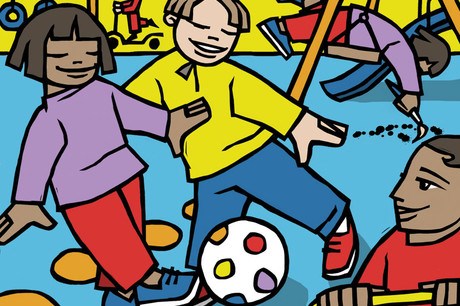
SOCIAL AND EMOTIONAL DEVELOPMENT
Jagati’s well-developed physical control gives her self-confidence. In addition, her agility and dexterity means that she has more opportunities for social interactions because she can approach, follow and retreat from other children. She loves to follow or be followed by Tom around the garden either running or on trikes. She seems to have formed a strong bond with Tom; they both love running, throwing and kicking balls.
Children of this age often form friendships based around shared schematic interests, in this case, trajectory. Recently, though, Jagati has become more possessive of her friend, so when Sasha tries to join in, Jagati pushes her away. Jas has also noticed that Jagati has become more fractious recently and seemed to be very tired by the end of the session.
The Unique Child: in practice
When Jas talked to Gita about these observations, Gita said she had noticed Jagati being possessive towards the baby too and not letting Neelam cuddle him. She also thought that Jagati was over-tired maybe because the baby cries in the night or maybe because she seems to be growing a lot at the moment.
They agreed that Jagati might be trying to get close to Gita through being close to Sunil and that she had had a lot of changes to manage recently. So, they decided they would both set aside time to give Jagati individual attention both alone or with the baby or Tom and that Gita would reinstate her afternoon nap for a while.
20-30 months: key aspects of personal, social and emotional development
Toddlers and two-year-olds are ‘person creating’; developing a sense of who they are is central to their experience. They:
l are increasingly self-conscious; developing feelings of pride, embarrassment, shame and guilt
l are beginning to form their social identities, understanding that they are a girl or a boy and showing interest in obvious differences of ethnicity and ability
l usually know their own name and will name themselves
l are developing definite likes and dislikes
l are beginning to be able to say how they are feeling, but are often feel frustrated when unable to express themselves so may have tantrums
l build relationships with special people and are wary of unfamiliar people
l explore new situations
when supported by a familiar person and will return
for reassurance if they become anxious
l are interested in other children and want to join in play but may not have the social skills
l may form a special friendship with another child
l demonstrate a sense of self as an individual and want to do things independently
l respond to the feelings of others
COMMUNCATION AND LANGUAGE
In the third year of life, expressive language (what the child says) is usually really taking off. To an English-speaking adult who doesn’t know Jagati well, it might appear that her spoken language is delayed, however, this is not the case. As a bilingual child, Jagati’s language development pattern follows the same path as a monolingual child but this may take a bit more time as she is processing more information.
This is not a disadvantage; growing up fluent in more than one language is beneficial because it enables children to think more creatively, as they become aware of the abstract nature of language much earlier than monolingual children. Gita reassures the playgroup workers that at home Jagati is talking a lot, but sometimes she stops using a word she knows in Punjabi and starts to use the new word in English.
Also, for all two-year-olds, their level of receptive language (what they understand) far exceeds their expressive language, so they rely heavily on communicating in many other ways. All human communications are mostly non-verbal, and two-year-olds’ understanding comes from the ‘tune’ of what they hear as much as, if not more than, the words. Jas has wondered whether a part of Jagati’s friendship with Tom is their shared ability to ‘read’ non-verbal communications very well – Jagati because she is bilingual and Tom because he wears hearing aids.
The ‘tune’ of a language includes intonation, the emotional tone of the communication and the rhythm and pace of the sounds. For Jagati, entering a new social setting, such as the playgroup, means that she has to get used to different ‘tunes’ as some of the adults and children have different accents as well as different languages.
This may take her a little while and her expressive language may pause while she adjusts her ‘tuning’. Luckily, Jas also speaks Punjabi as well as English, although she does so with a different accent, so ensures she speaks clearly and uses a lot of signs and gestures with Jagati, Tom and all the children.
20-30 months: key aspects of communication and language development
The ways in which children communicate at this age vary hugely, and non-verbal communications are very important. Communication is supported through trusting relationships with adults who know the child and their family well.
At this age, it is common for children to:
l put two or three words together to make short phrases and ask simple questions such as, ‘doggie gone’ ‘go park now?’ This is called telegraphic speech
l name things and what they do
l name movements, for example, ‘up’, ‘gone’
l understand simple sentences and follow a simple instruction
l enjoy rhythmic patterns in songs, rhymes and stories and like favourites repeated
l copy familiar expressions
l sometimes understand more complex sentences – ‘when we’ve finished lunch, we’ll go to the library.'


